The popular Bauhaus focus, preoccupation, of discussions on creativity in the 1920s very naturally leads to us all ignoring other important protagonists, causes us all, when oft unwittingly, to miss other equally valid, and enjoyable, paths to appreciations of developments in craft, design, technology and our objects of daily use in the early decades of the 20th century, that important, and still very relevant, period where handwork increasingly ceded to industry.
With Haël. Margarete Heymann-Loebenstein and her workshops for decorative ceramics 1923-1934 the Bröhan Museum, Berlin, helps one locate, and begin to explore, one of those regularly overlooked paths and thereby allows one to begin to develop those more probable appreciations.......
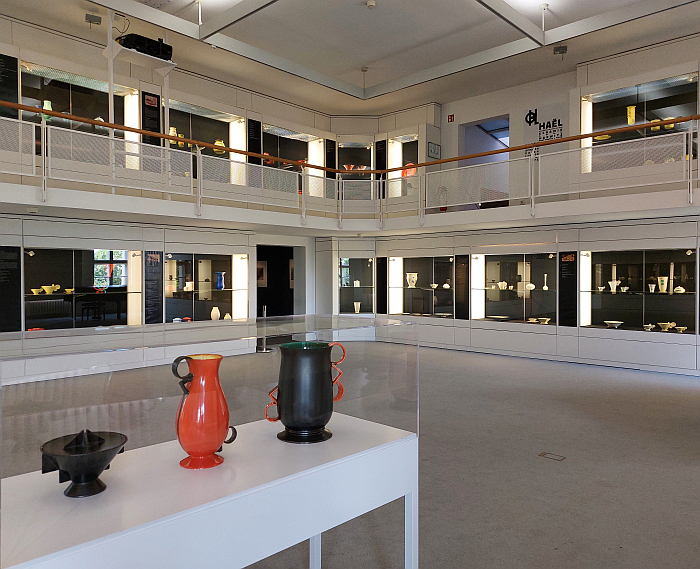
Established in 1923 in Marwitz, a village in a region to the north of Berlin with a long (hi)story of and in ceramics, not least in context of decorative tiles for ceramic stoves, but also decorative wall tiles, many of which were employed in the Berliner expressions of Jugendstil, and examples of which can be still be found adorning late 19th/early 20th century walls in the German capital, Haël-Werkstätten für künstlerische Keramik, a.k.a. Haël, is and was essentially a platform for Margarete Heymann-Loebenstein, a creative who, while still Margarete Heymann, had learned her craft, her art, and who began to develop her positions and her approaches, during periods at the Kunstgewerbeschule Köln, the Kunstakademie Düsseldorf and Bauhaus Weimar, or more specifically the Bauhaus ceramics workshop in Dornburg under the direction of Gerhard Marcks, before, together with her, then, husband Gustav and brother-in-law Daniel as the more business orientated components of the partnership, establishing Haël, and that at the age of just 24.
And with objects of the type with which Haël. Margarete Heymann-Loebenstein and her workshops for decorative ceramics 1923-1934 opens; specifically with relatively simply formed terracotta works representative of a craft sensibility, simple terracotta works decorated with rudimentary repeating patterns based on geometric forms indicating an expressionist influence, and works which are, certainly for us, mildly reminiscent of a vernacular Marwitzer folk art tradition that doesn't actually exist. But which very well could. And in which being such not only reminds of the contemporary obsession with the invention of traditions in the design (marketing) industry but also reminds of the folk art influence on early expressionism. And simple terracotta pots which, when not strictly achromatic, are certainly as restrained in their colour as they are in their form.
Restrainments which, as Haël helps elucidate, quickly changed. First the decoration became more colourful, a shift not unrelated, as the curators note, to the addition of glazed earthenware alongside unglazed terracotta in the Haël portfolio; glazed earthenware which demands colour, and whose demand was met through, amongst other developments, a shift from the non-existent Marwitzer folk art to the use of brightly coloured concentric circles, a much simpler, and in many regards more effective, more communicative, form of decoration that, if one so will, also stands as an indication of an increasing confidence, an increasing self-confidence, at Haël. And simple works enhanced by brightly coloured concentric circles that inarguably could be launched tomorrow and would bring a freshness to any porcelain manufacturers portfolio.
And subsequently, from around ca. 1925, there is a very obvious move from expression through applied decoration to expression through form, and for all the increasing use of juxtaposed, oft incongruously so, geometric forms as the basis for objects. A move, again indicative of an increasing confidence, an increasing self-confidence, at Haël; and a move, inarguably, most popularly represented by Heymann-Loebenstein's so-called Scheibenhenkel - Disc Handle - tea service launched in 1930 with its distinctive pair of Scheibenhenkel - Disc Handles - inserted matter-of-factly, if also very abruptly, almost rudely so, into a simple conical form to create an object not only as challenging as it is alluring and welcoming to view, but which also offers a new interpretation of what a handle is, makes a handle structural and decorative, rather than the functional you expect. And thereby openly challenges the belief that form follows function. In the Scheibenhenkel tea service it very much follows concept. It's almost Postmodern at the height of Modernism.
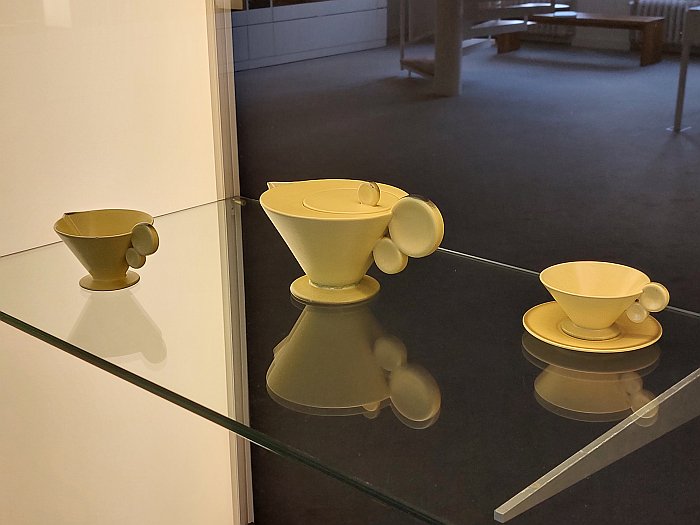
A shift from expression through applied decoration to expression through form also explored in Haël through lesser-seen works including, for example, a vase composed, apparently, of two small vases stacked upon one-another and bound by what appears to be an eel; a coffee service where the cup handles present themselves as an unapologetic afterthought, not that they have anything to apologies for quite frankly, they are utter delight; or by two jugs whose resemblance to falling drops of liquid very neatly and succinctly and poetically confirms their function.
A shift from expression through applied decoration to expression through form that for all it retains the colour, retains the almost child-like delight in colour, of the applied decoration, very often employs colour as a solid coating, thereby reducing its role while increasing its effectiveness, which is a very neat, and very satisfying, trick.
And a shift from expression through applied decoration to expression through form that tends to imply that in Marwitz Margarete Heymann-Loebenstein found her voice, understood what she wanted to say and developed vocabularies to enable her to articulate that; and which thus also very much implies that the developments of the late 1920s in Marwitz established the direction Heymann-Loebenstein and Haël were setting off on. A journey, as the works on show in Haël unequivocally inform you, to be undertaken with a goodly degree of self-assurance and vitality.
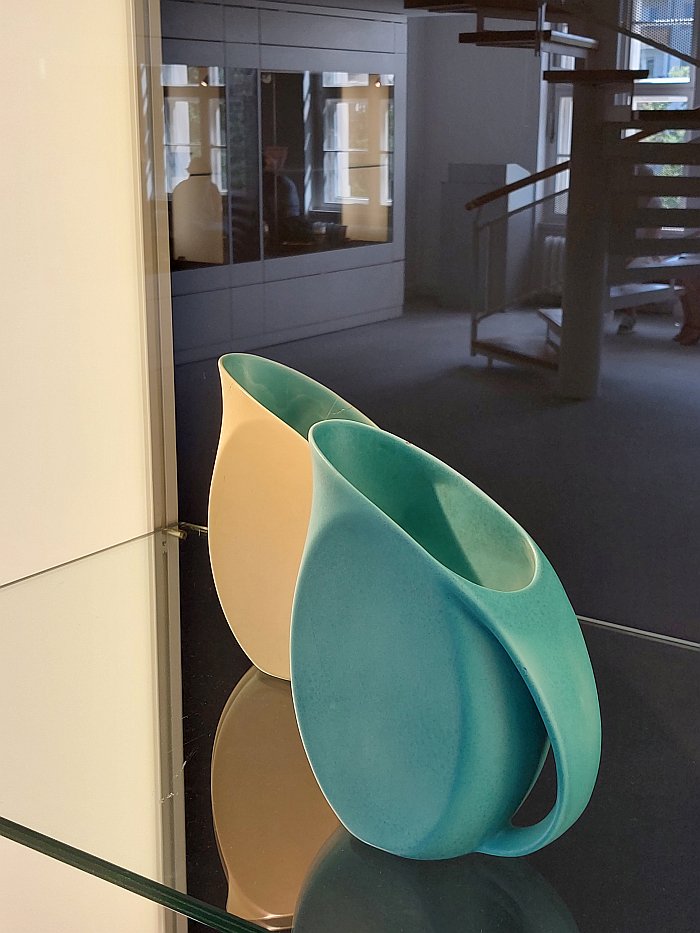
But then, as so oft in the lands of the contemporary Germany, the freedom and gaiety of the 1920s ceded to the 1930s and first the dark clouds of the economic crises and then the even darker clouds of the NSDAP; the former seeing, as Haël explains, Heymann-Loebenstein, swap the free, explorative, striving, dynamic, uninhibited forms of the late-1920s for much simpler, more utilitarian, if no less engaging and communicative, forms, including that of the 1932 Norma tea service, a service which despite its aching simplicity is a very astutely proportioned and scaled work; if the milk jug admittedly is still very publicly yearning for the late 1920s, it's handle apparently having been peeled back from the top of the jug, thereby also creating the spout, like some early prediction of Tetra Pak.
A Norma tea service which in its simplicity, and also in the brown-ness it is presented in Haël, finds an echo in the terracotta works met at the start of the Haël journey; albeit a relatively indistinct echo whose vague familiarity, whose fuzzy but unequivocal union, helps highlight the great many differences between the early 1920s and the early 1930s, an indistinct echo within the Bröhan Museum which helps highlight the developments at Haël, the journey taken from the simple, brown, terracotta of the early 1920s to the simple, brown, steingut of the early 1930s; helps highlight the differences, the developments, the distance travelled in Margarete Heymann-Loebenstein's positions and approaches and intentions and practice between the first vitrine and the last.
A last Haël vitrine because for all that Norma allowed Haël to continue trading in the early 1930s while a great many Marwitzer ceramics businesses folded under the economic pressure, arguably testament to Heymann-Loebenstein's business acumen, and that Heymann-Loebenstein's acumen alone, Gustav und Daniel having tragically died in a car crash in 1928; the subsequent rise of the NSDAP, itself not unrelated to the economic crises, forced Margarete Heymann-Loebenstein to quit Haël, and to quit Marwitz, initially seeking to establish a new life in Israel before settling in 1936 in England, where she remained until her death in 1990 aged 91.
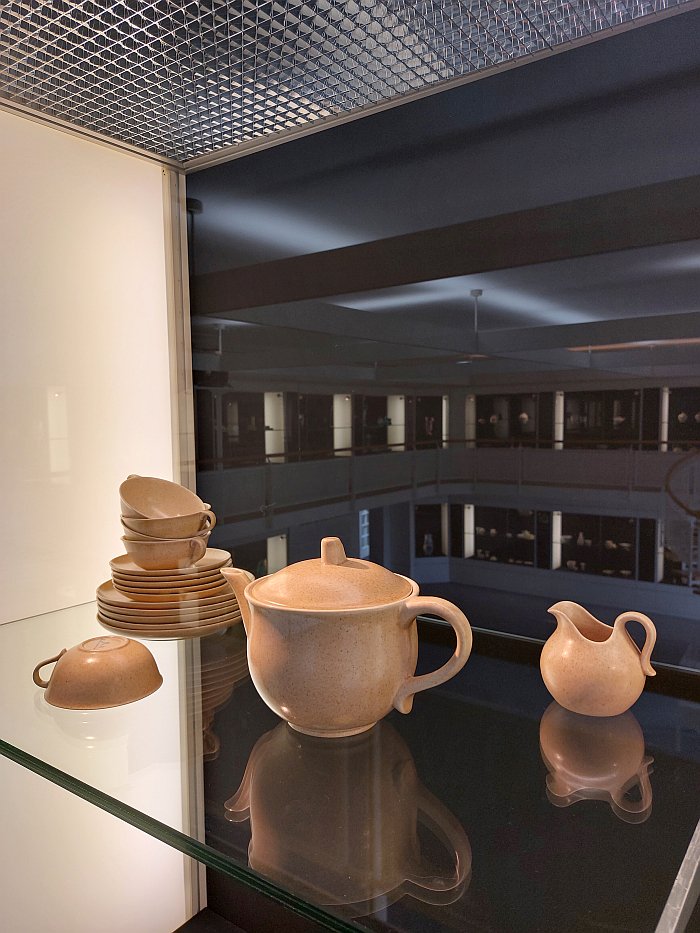
An approachable and logically designed bi-lingual German/English showcase, if one, yes, presenting a lot of ceramics in glass vitrines, ¯\_(ツ)_/¯, but highly engaging, interesting and informative objects which help the narrative to flow at a sprightly but not overly sporting rate, Haël takes you on an inter-twinned thematic and chronological journey that not only introduces the (hi)story of Haël, that path from simple terracotta to the (apparent) simplicity of Norma, but which along its route also introduces wider aspects of the Haël (hi)story, elucidates the complexity and multiplicity of the journey you are on, confirms the great many diversions one can take on that journey, including, for example, introducing Margarete Heymann-Loebenstein's floral patterns, in many regards an extension of her non-existent folk art into more tangible forms without foregoing anything in terms of abstraction and fantasy; or the development and utilisation of new glazes and glazing processes at Haël including making mention of the brief tenure, and contribution, of Franz Eggert as glazing technician, an artist who was widely active in the ceramic workshops of eastern Germany in the 1920s; or the use of sprayed decoration, that so-oft popularly over-looked moment in the late 1920s on the way from craft to industry, yet, as discussed from Decoration as Trespass? at the Werkbundarchiv – Museum der Dinge, Berlin, an important moment that not only allowed for a near mechanised application of decoration to objects, but which, for all when combined with stencils, allowed for the repeated use of the same patterns in different colours and contexts; and sprayed decorations which, as Haël notes, Haël were early adopters of if not the most prolific utilisers of, hand-painting remaining very much the primary approach.
If, as Haël elucidates, the use of the same patterns in different colours and contexts was a central component of Haël, just hand-painted rather than sprayed; a use of the same patterns in different colours and contexts that can be understood in the non-existent Marwitzer folk art of the early Haël years and which can subsequently be followed in Haël across the numerous applied decoration approaches practised by Haël.
And a use of the same patterns in different colours and contexts that helps focus attention on, and allows for a differentiated viewing of, the wide variety of objects Haël produced; Haël presenting alongside crockery and tableware, an array of vases including a great many with holes to allow for more artistic flower arranging, storage solutions of various types, desk and writing accessories and a lot of ashtrays, an awful lot of ashtrays, it was after all the 1920s not the 2020s.
A variety of objects, approaches, expressions and positions presented in Haël and developed, realised and advanced by Haël in, essentially, a decade, that not only allows one to better appreciate the place and relevance and informativeness of Haël in context of the creative developments of the 1920s, and by extrapolation since then, but also to better appreciate, and grasp, the relative speed at which those developments occurred, the relative speed inherent in the 1920s, and the relevance of the rise of fascism in 1930s Europe and the War of the 1940s on the flow of that development.
And the relevance of fascism and War in Europe on the career of Margarete Heymann-Loebenstein.
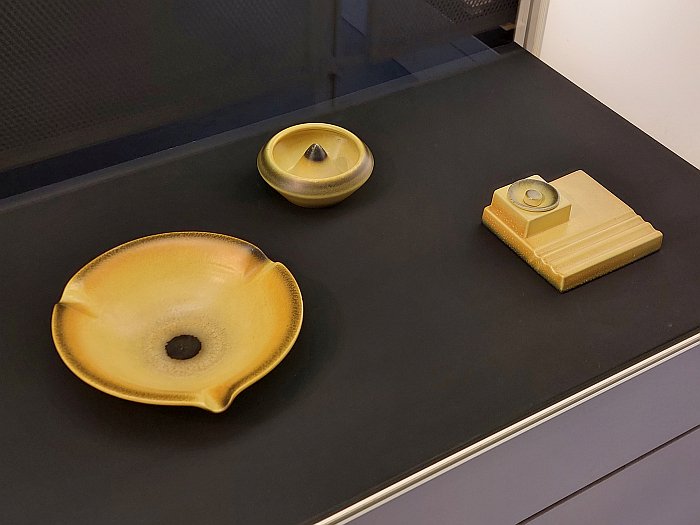
A career that as the final chapter of Haël explains she attempted to re-start in England. But didn't quite manage to.
A final chapter which, in keeping with the tenet of the whole exhibtion, places its focus very much on the works produced in the period under discussion, introducing as it does examples of Margarete Heymann-Loebenstein's, of Margarete Heymann-Marks's as she became in 1938, English ceramics including objects that, arguably, represent a return to the early 1920s: simple forms with simple patterns, with colourful concentric circles, with flowers, with allusions to craft, and with the hint of the influence of a non-existent folk art tradition. If that was an expression of Heymann-Marks going back to start again by way of finding a new way forward in her new context, the new chapter of her life, or Heymann-Marks seeking to leave behind the abstract geometry by way of attaining closure on the Marwitz chapter of her life, or her appreciation that, as with the early 1930s in Germany, the economic realities of late 1930s/early 1940s, War time, England required simple utilitarian forms that brought cheer at a minimum of cost and material usage, or for some other reason, we know know. But is something we very much intend to follow up. Similarly we don't know if the blue crosses on the late 1930s plate presented in Haël are a deliberate attempt to place the plate as a Meissen. Or not. But, as Haël helps elucidate, Margarete Heymann-Loebenstein, Margarete Heymann-Marks, Margarete Heymann, has every bit as much a place in the (hi)story of European ceramics as the royal ceramicists of Meissen.
A place Margarete Heymann isn't always allowed to take. And that, arguably, on the one hand because of the wider issues of the visibility of female creatives of generations past in contemporary appreciations of, and discussions around, the (hi)story of design, that popularly told (his)tory of design; on the (related) other hand on account of her relative lack of success in England thus her lack of a popular, visible, pot-War biography; on the third hand the popular 1920s focus on Bauhaus, an institution with whom Margarete Heymann was associated, an institution which without question influenced her and was an important moment in her development, but whose popular contemporary (marketing led) image she so regularly, and successfully, contradicts and challenges. And on the very rare fourth hand on account of her private biography, a biography that is so often at the forefront of discussions on Margarete Heymann and which tends to distract from the work she produced.
Haël is unequivocally an exhibition about Haël, about the work of Haël, the output of Haël, the development of Haël, the place of Haël in the (hi)story of creativity. It's not a Margarete Heymann-Loebenstein exhibtion. And in being such not only uses Haël, the works of Haël, the development of Haël, as a conduit to lead one through the (hi)story and development of ceramics and our objects of daily use in the 1920s, and thereby elucidate and highlight the place and relevance of Haël in and to the developments and discourses of the period and the informativeness of Haël in our contemporary reflections on the period, but also, and very satisfyingly and very pleasingly, through largely ignoring Margarete Heymann-Loebenstein1 Haël helps Margarete Heymann to regain control of her biography and thereby to begin to retake her place on the helix of design (hi)story. With all the advantages the improved appreciations of the paths thus taken thereby enabled can but bring contemporary and future design.
As can a move away from the primacy, preoccupation, of the Bauhaus focus when considering creativity in the 1920s. A move Haël not only helps you make but admonishes you must.
Haël. Margarete Heymann-Loebenstein and her workshops for decorative ceramics 1923-1934 is scheduled to run at the Bröhan Museum, Schlossstraße 1a, 14059 Berlin until Sunday January 21st
Full details can be found at www.broehan-museum.de
In addition a richly illustrated catalogue featuring numerous essays on Haël, Margarete Heymann-Loebenstein and the great many surrounding issues is available. If sadly only in German.
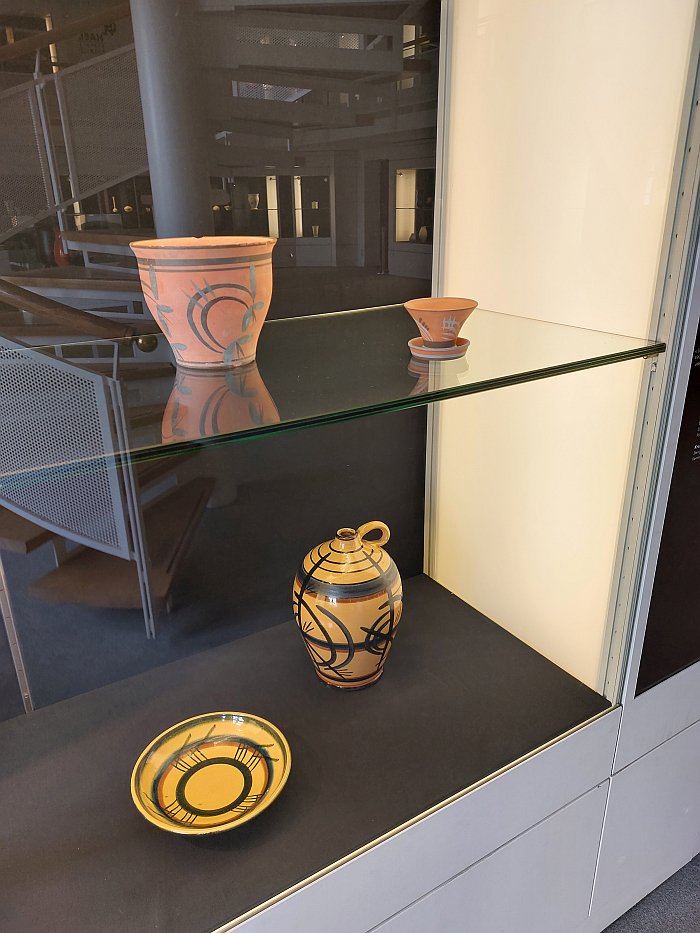
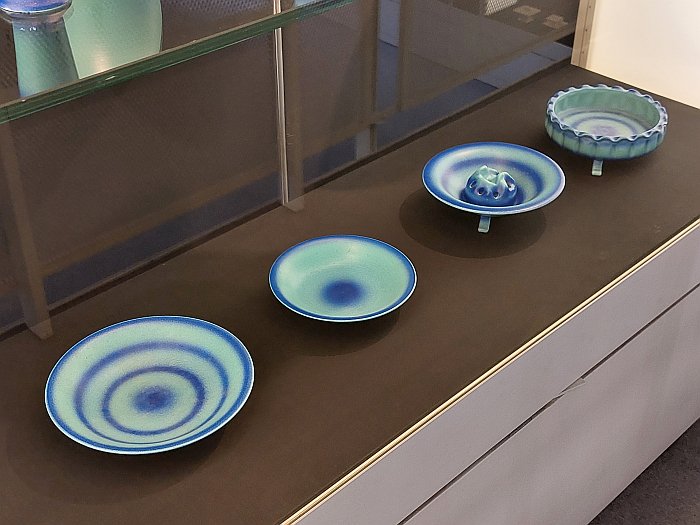
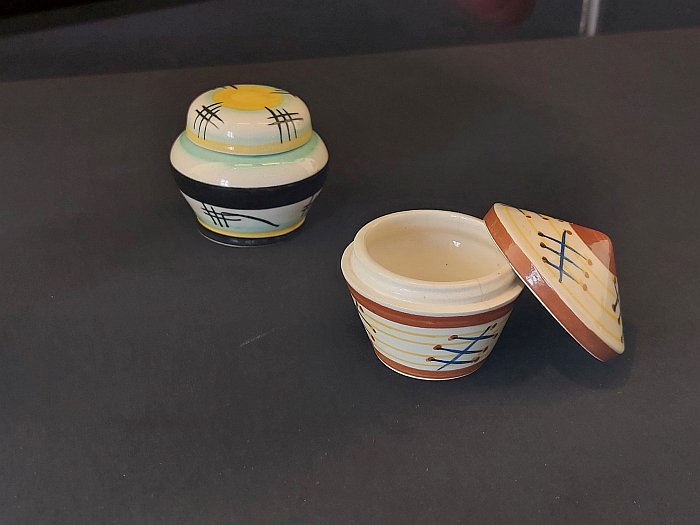
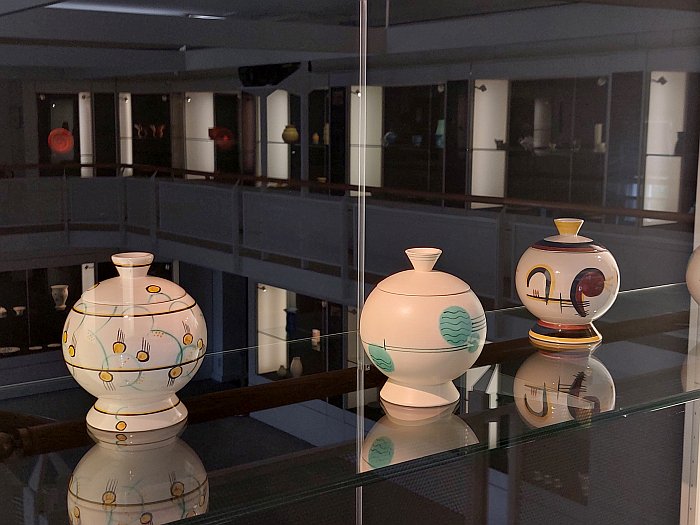
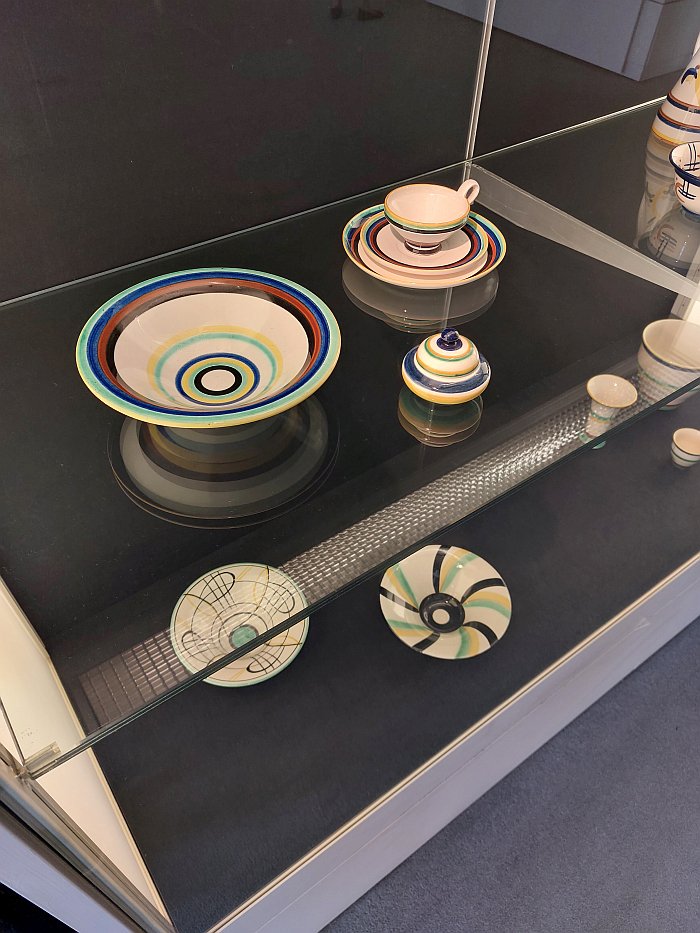
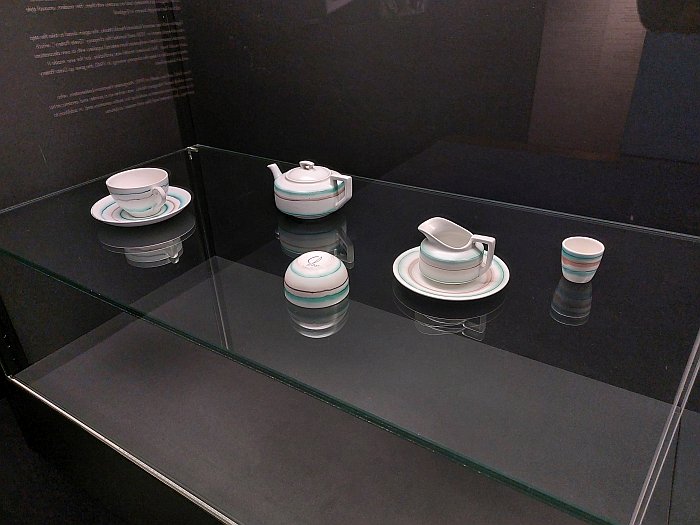
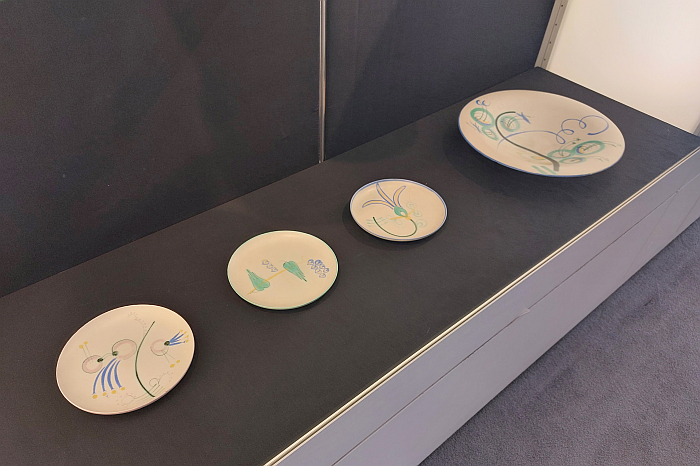
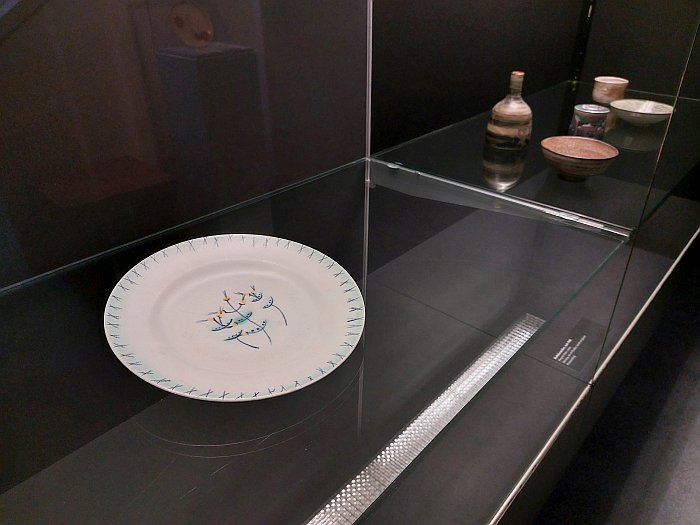
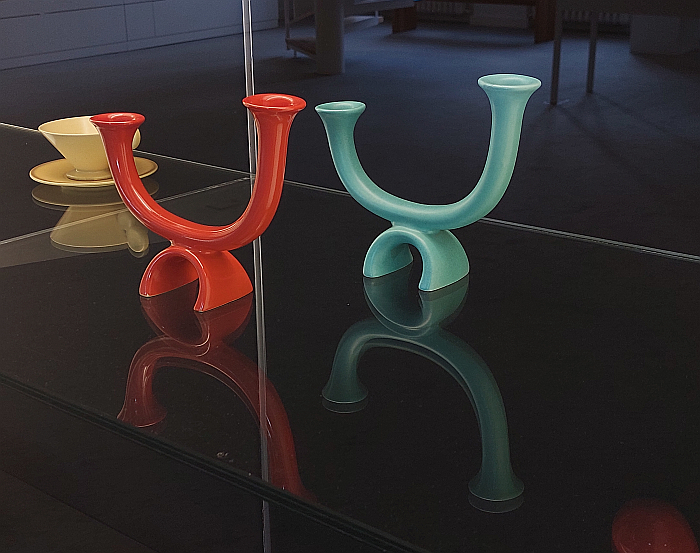
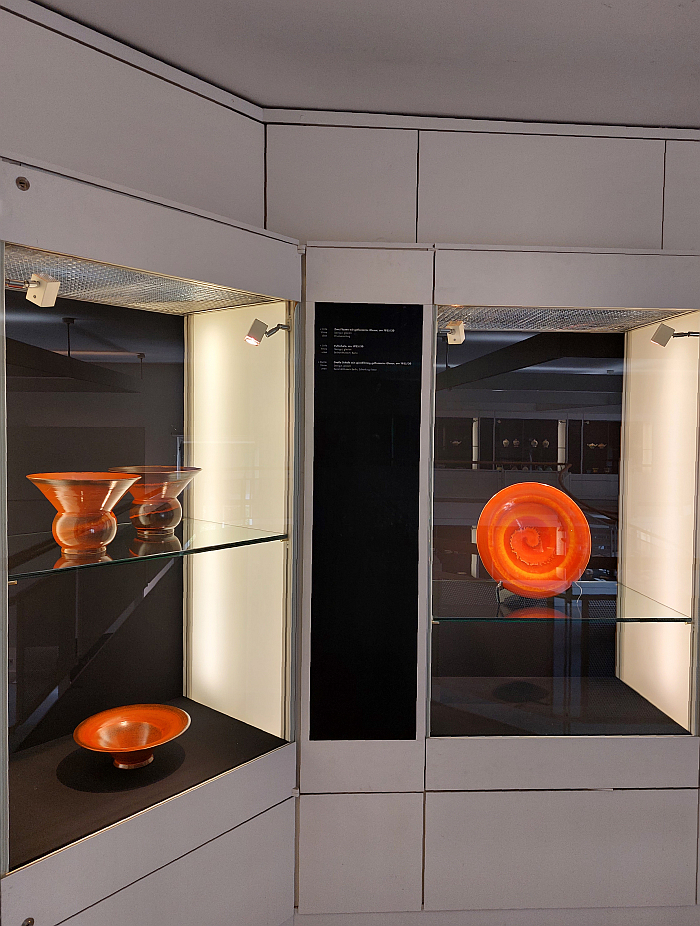
1The inextricable existence of Haël and Margarete Heymann-Loebenstein means that Heymann-Loebenstein's personal biography is ever present in Haël, if often unspoken; for example, it doesn't explain why she left Marwitz and moved to England, and while the reason isn't that hard to deduce, its absence does very pleasingly force you to do the research yourself rather than rely on a short exhibition text, and thereby busy yourself in detail with the nature of her departure from Marwitz and the brutality of the NSDAP and those who sought to profit from their toxicity and violence, and thereby takes you into the realities of, and the warnings of, early 1930s Germany. Nor does it concern itself all too much with her life in England, including failing to approach the questions of why she failed to establish herself in a post-War ceramics industry that she surely could have positively, meaningfully contributed to, an absence whose obviousness, tangibility, stimulates you to follow up on your own. Not least because Haël allows you to appreciate what she could have been, what she wasn't, in England.